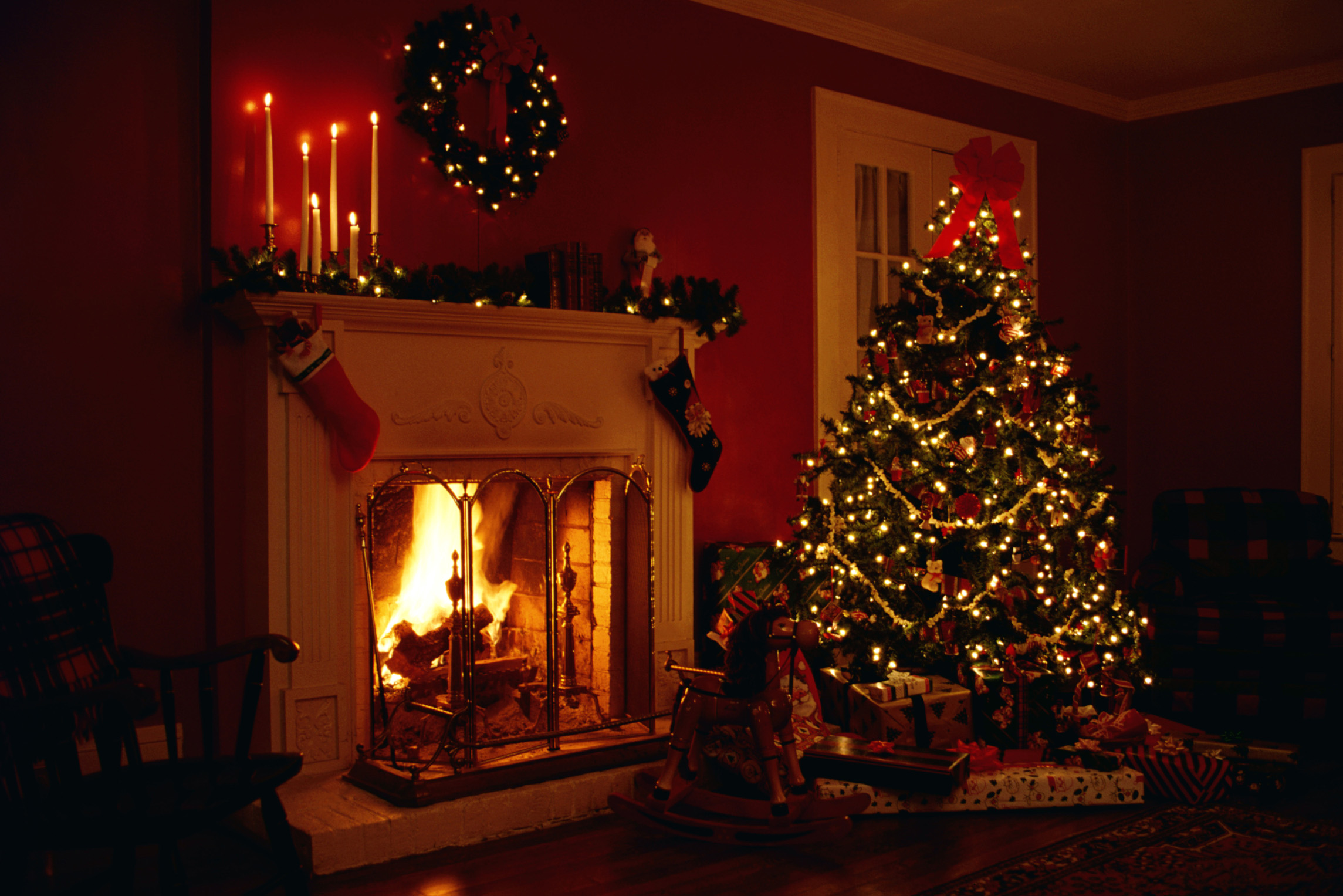Few traditions evoke the warmth, nostalgia and coziness of the holiday season like a brightly lit Christmas tree in the living room. But between the holiday gifts, parties, plane tickets and other expenses, a pricey Christmas tree is probably one of the last items on which families want to overspend.
When buying a Christmas tree, the first decision buyers need to make is between getting a real tree or investing in an artificial one. Some consumers may prefer a real tree, which can come from a local farm and be recycled into mulch or other green products once the holiday ends, while others may prefer the reusability and relative ease of artificial greenery. The average price of a real Christmas tree in 2017 was $75, according to data from the National Christmas Tree Association, a trade group representing tree sellers. The average price for an artificial tree was $107.
Here’s how to save money on a Christmas tree:
— Choose your retailer wisely.
— Select a healthy tree.
— Buy a smaller tree.
— Buy late in the season.
— Ask the retailer for help.
— Consider an artificial tree.
— Pay attention to quality and materials.
— Go against trend.
Depending on your tastes and preferences, budget-conscious Christmas celebrants can use a variety of strategies to save money on a Christmas tree this year. Read on for more information on each technique.
[See: Prepare Your Finances for the Holidays.]
Choose Your Retailer Wisely
Real trees. There are myriad locations to buy a real Christmas tree, depending on where you live and how far you’re willing to travel. Consumers can head to choose-and-cut farms, where they select their own tree and chop it down on the spot. Others may travel to nurseries, parking lot stands, churches and big-box retailers such as Home Depot and Lowe’s. Even Amazon will deliver a real Christmas tree to your door for about $115.
If you’re looking for the cheapest rates on real trees, national chains may have the most competitive prices, says Tim O’Connor, executive director of the National Christmas Tree Association. “If affordability is the trigger, I think a consumer is smart to say, ‘Where do I know I can shop for value?'” He adds, “National retailers who position themselves as a place to shop and get a great value every day, those types of retailers build their Christmas tree offering for exactly that kind of customer.”
If you’re looking for value beyond a Christmas tree, such as a chance to see where the tree is grown, take a hayride, drink hot chocolate and meet Santa Claus, a tree farm may create more of a holiday experience for you and your family, says Elizabeth Lamb, a senior extension associate for Cornell University’s New York State Integrated Pest Management program, who works with producers of nursery crops and Christmas trees.
When it comes to how real trees are priced, retailers may price the trees by foot, charge by quality or assign a flat price.
Artificial trees. Like real trees, artificial Christmas trees are available from a range of retailers, including online sellers such as Amazon, specialty retailers and brick-and-mortar stores, including Home Depot, Lowe’s and Walmart.
If you can’t examine the artificial tree in a brick-and-mortar store before you purchase it, aim to buy one from a business you trust, says Thomas Harman, CEO and founder of Balsam Hill, a retailer of high-end artificial Christmas trees and other seasonal decorations. Again, pricing for an artificial tree will vary based on size, quality, style and other factors.
Select a Healthy Tree
If you’re buying a real tree, aim to select one that’s thriving. Choosing a healthy Christmas tree increases the chances that it will keep its luster until Dec. 26.
If you’re not at a farm, ask the retailer how recently the tree was cut and where it originated. Trees decline in quality after they’ve been cut for a long time, transported and rolled up, Lamb says. As you look to select a tree, run your hand down a branch. If you find a few needles in your hand, that’s OK, Lamb says. But if you come away with an entire handful, don’t buy the tree. Steer clear if the branches are stiff and dry instead of springy.
While you can buy a real tree sight unseen from retailers such as Amazon, experts generally recommend buying a tree that you can touch, assess and smell in person instead of having one shipped to your home. If you can support a local farm, even better, experts say.
[See: Your Ultimate Holiday Tipping Guide.]
Buy a Smaller Tree
One of the simplest ways to reduce costs is to buy a smaller tree. “If you’re trying to have a lower price, get a tabletop tree, decorate it and it still smells good,” Lamb says.
You may be able to find smaller varieties at a nearby garden center or nursery instead of the local tree lot. For bonus points, consider buying a rosemary bush, Harman says. These plants look festive, smell good and you can use the sprigs later to cook rosemary-flavored dishes.
Buy Late in the Season
Another method, which is a bit riskier, is to buy a tree a couple of weeks before Christmas when you see prices marked down or you’re able to negotiate with a seller. When it comes to real trees, “a Christmas tree is not very valuable on Dec. 26,” O’Connor says. “The closer you get to the (holiday), you’ll see prices lowered to clear out remaining inventory.”
Keep in mind that this strategy may not work at a choose-and-cut location because the farm may simply keep the tree in the ground for another year instead of selling it at a discount.
This strategy may also work for artificial trees, as retailers aim to clear out inventory and focus on next year’s designs as the season comes to a close.
Ask the Retailer for Help
If price is a major concern, see if you can work with a farmer or retailer to find a tree within your budget. You may also qualify for a free or low-priced Christmas tree if, for example, you are a member of the military. Trees for Troops delivers trees to military bases, and your local church or nonprofit may have similar programs.
[Read: How to Act Generously When You’re Broke.]
Consider an Artificial Tree
An artificial tree may be the right option for your family if you have allergies, don’t want to deal with the maintenance of a real tree or prefer a tree that comes pre-lit. Consumers can also make the argument that if the tree lasts for several years, it’s a more frugal strategy to decorate your home. “It’s clearly more cost-effective to buy an artificial tree,” Harman says. “At Balsam Hill, we expect people to use our trees for 20 years or more.”
Of course, it won’t come with the real-tree smell and will be made of plastic and other materials, which can’t biodegrade or be recycled into mulch like a real tree. But for some families, an artificial tree can be the right choice.
Pay Attention to Quality and Materials
If you’re looking for a high-quality artificial tree, pay attention to the materials used in making the needles, Harman says. “Look at things like what percent of the tree is made from ‘true needle,’ or polyethylene, and what percent is made from ‘shredded paper on a stick’ or PVC needles,” he says. A higher ratio of real-looking polyethylene needles, especially around the exterior branches, will make the tree look more realistic, Harman says.
Pay attention to cubic volume, too, Harman says. “You get what you pay for,” he says. A tall tree that seems unbelievably cheap may skimp on width and offer thin foliage.
Artificial trees also vary in their ease of setup. You’ll pay more for a streamlined tree that involves a few minutes of setup than you will for the more labor-intensive options.
Go Against Trend
Balsam Hill’s Harman notes that, as consumer demand has shifted toward artificial trees with LED lights, those with incandescent bulbs have gotten more affordable. “You’re getting a steal on incandescent trees this year,” he says. He also points out that tastes have shifted toward clear lights, so consumers may be able to find a great deal on a tree pre-lit with multicolored bulbs.
More from U.S. News
8 Big Budgeting Blunders — and How to Fix Them
12 Useless Fees Draining Your Budget
10 Big Ways to Boost Your Budget — Without Skimping on Your Daily Latte
How to Save Money on a Christmas Tree originally appeared on usnews.com







